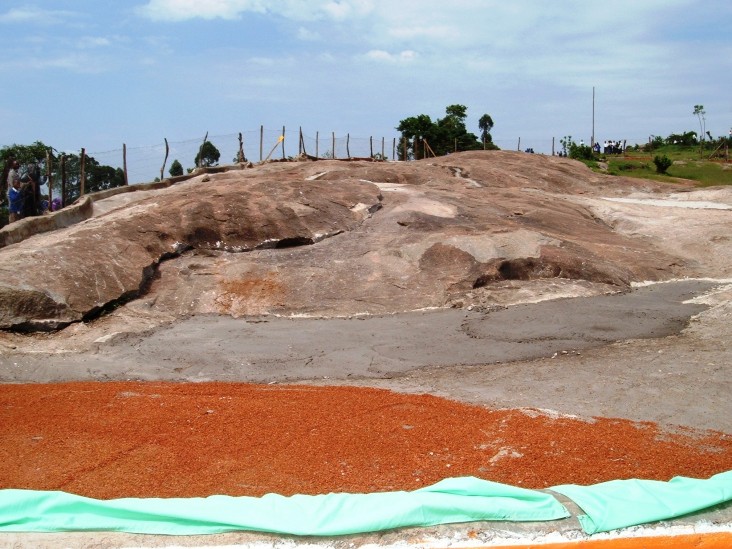
The people of Kapsasian community, near Kenya’s renowned Masai Mara Game Reserve no longer have to walk miles in search of water thanks to a USAID/East Africa project that uses a giant rock to capture rain water.
“The rock only used to be good for harboring monkeys but now it’s our only source of water,” said one community member referring to a troop of baboons that used to spend nights on the rock.
The Kapsasian rock catchment is an innovative example of how USAID has helped provide water to the communities. The rock catchment is a vast, bare and exposed natural rock situated on a slope. Now, as if by magic, any rain water that falls on to the rock quickly drains into a 50,000 liter water storage tank, placed strategically below the rock and connected to a small drain pipe.
“We used to rely on small local water ponds that would fill up during the rains,” said a community member. But over time, those ponds became insufficient for the community’s needs.
To address the concerns of the rapidly diminishing life source— water—in this unique but unforgiving ecosystem, USAID/East Africa developed a ‘transboundary’ project, to help ensure sound management and clean flow of the Mara River Basin, the major water source sustaining the Mara and Serengeti wildlife parks.
As part of this effort, USAID has also helped local communities find sustainable, safe ways to access water without damaging the Mara River Basin and its tributaries, while also meeting the community’s sanitation and hygiene needs.
The rock catchment provides clean water for many families living in the area but is just one example of a sustainable solution to a natural resource challenge. Between 2008 and 2009, USAID provided drinking water to more than 16,000 people living in the greater Mara-Serengeti ecosystem.
Reinforced with hygiene messages, Mara River Basin communities are changing behaviors that may not only improve their health, but also protect and conserve their valuable natural resources and surrounding habitat.







Comment
Make a general inquiry or suggest an improvement.